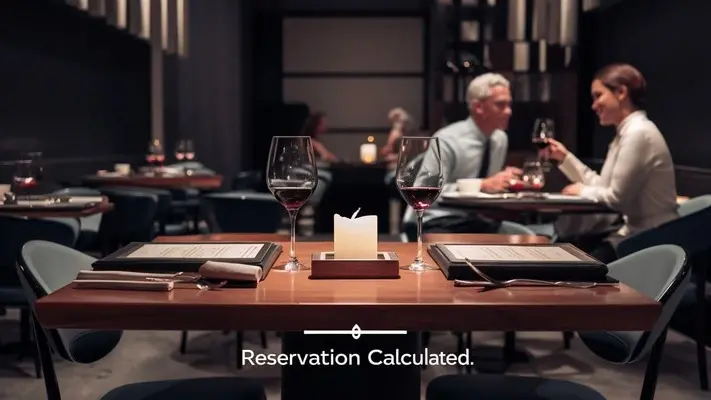How is reservation calculated?

How is Reservation Calculated?
Affirmative action is a policy that involves the appointment or allocation of a specified percentage of government jobs, a proportion of seats in schools and universities as well as in the legislative assembly to the historically marginalized groups. The primary goal of the reservation is to bring parity and access to employment for otherwise underprivileged groups such as the SCs, STs, and OBCs. Now that we have established which groups are preferred and which are not, let us understand how the reservation percentage for these groups is arrived at. Here is an overview:
Legal Basis
The reservation of jobs in India is protected by the Constitution under Articles 15(4) and 16(4), according to which the state can make provisions for the protection of the rights of SCs, STs, and OBCs. The Constitution does not give any fixed and certain method or percentage to be followed while making a reservation but according to it, the extent of reservation cannot exceed more than 50%. This percentage has been increased over the years in some states, but the Supreme Court has affirmed that quotas should not exceed 50% in a given state, or setting of a university, in any given circumstances.
Factors Considered
There are no universally applicable guidelines, but certain key factors are considered when deciding reservation percentages: There are no universally applicable guidelines, but certain key factors are considered when deciding reservation percentages:
1. Demographics: What percentage of the total state or national population does the beneficiary group form based on census data? Their reservation cannot take more than this percentage share of the total quota.
2. Economic & Social Backwardness: Were there ever instances of injustice and discrimination in the community? Which of the factors such as literacy, poverty levels, land ownership, and others show their development state as backward? As the status of the group becomes lower and lower, the need for its members to be given a better chance increases.
3. Adequate Representation: To what extent is the group included in public service and education currently? It is, therefore, possible that the quotas in these categories are already proportionate to the population of the individuals or groups in question, and so may not be required.
Quantifiable Criteria
The Mandal Commission which enhanced the OBC quotas in the 80s has laid some principle yardsticks to assess the backwardness quantitatively. These include:
- Social: Backward castes/tribes described as not having more than 25% representation in government jobs and Class I officers.
- Educational: Educationally, castes/tribes are treated as being backward if their literacy level is below the state literacy level.
- Economic: Such a condition is considered as backward if less than 10% of the caste members live in pucca houses; more than 20% take up manual labor; their average holding of land is below the state average; etc.
Based on such norms, it was the Mandal Commission that raised the quota of OBC from the earlier 27% to 49. 5%. The SCs and STs, have kept their quota at 15% and 7. 5% in the central government investment plan based on the estimated population of the whole nation. However, each state has autonomy in the case of SC/ST quotas based on the population census of the region.
Periodic Reviews
All expert groups have stressed that the quota for reservations has to be revised from time to time, at least every ten years. This is the case when groups about the general population in terms of number and socioeconomic status can significantly increase or decrease within a decade. A motor that is presently in the worst-off position may advance its circumstances and does not require the same degree of quotas. At the same time, new vulnerable populations can appear for whom patronage will be needed. This means that the downside of having fixed quotas is that they can be unfair if they remain fixed for some time.
Recent Renewed Demands
There has been a fresh outcry from many quarters for raising the percentage of SC/ST reservations at the central and state levels, doing away with the 50% limit, or even extending quotas in the private sector. The Constitution permits an increase in reservations above the percentage of fifty percent for the disadvantaged classes in certain circumstances. However, they have suggested that any changes should be done carefully with the aid of the latest empirically derivable data on backwardness. This is important so that the reservation is not overburdened, at the same time other social welfare schemes have to be developed.
Implementation Gaps
As useful as quotas are in addressing representation deficiencies it is important to acknowledge that there are still deficiencies in the way reservation is carried out in practice. Practical measures on how to make the selection process more responsive, increase consciousness, and make the selection criteria more equitable as well as create awareness amongst reserved category students, track the number of seats vacant, and polish the raw talent are as follows. Without these, people in marginalized groups are likely to lack the ability to translate increased reservation opportunities into real results.
Conclusion
Therefore, while making reservation calculations, a complex of factors including the demographic status of the community, measurable indices of backwardness, the constitutional provisions of ˜equality™ and ˜representation™, and the opinion of specialized bodies from time to time is taken into consideration. It is critical to get the formulas right “Quotas that are too strict may deny deserving communities an opportunity while on the other hand, if there are no clear facts to support the concept, the system might be perceived as being unfair. This means that the reservation system needs to be adjusted now and then if the country has to bring forth an inclusive society in India.
Call us at +1 8339022090 to secure the best deals on flight tickets today. Don't miss out on unbeatable prices for your next adventure!
